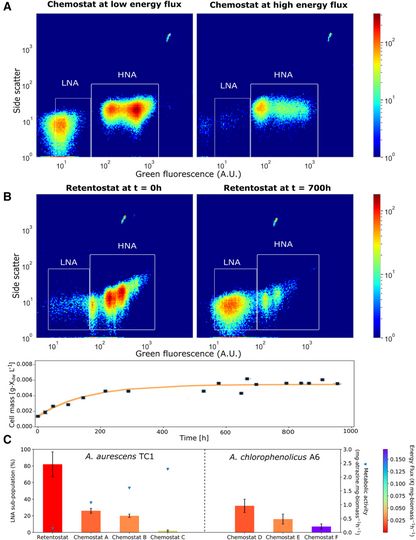K. Kundu, Nina Weber, Ch. Griebler, M. Elsner. Environmental Microbiology (2020)
Summary
Productivity-poor oligotrophic environments are plentiful on earth. Yet it is not well understood how organisms maintain population sizes under these extreme conditions. Most scenarios consider the adaptation of a single microorganism (isogenic) at the cellular level, which increases their fitness in such an environment. However, in oligotrophic environments, the adaptation of microorganisms at population level – that is, the ability of living cells to differentiate into subtypes with specialized attributes leading to the coexistence of different phenotypes in isogenic populations – remains a little-explored area of microbiology research. In this study, we performed experiments to demonstrate that an isogenic population differentiated to two subpopulations under low energy-flux in chemostats. Fluorescence cytometry and turnover rates revealed that these subpopulations differ in their nucleic acid content and metabolic activity. A mechanistic modelling framework for the dynamic adaptation of microorganisms with the consideration of their ability to switch between different phenotypes was experimentally calibrated and validated. Simulation of hypothetical scenarios suggests that responsive diversification upon a change in energy availability offers a competitive advantage over homogenous adaptation for maintaining viability and metabolic activity with time.
